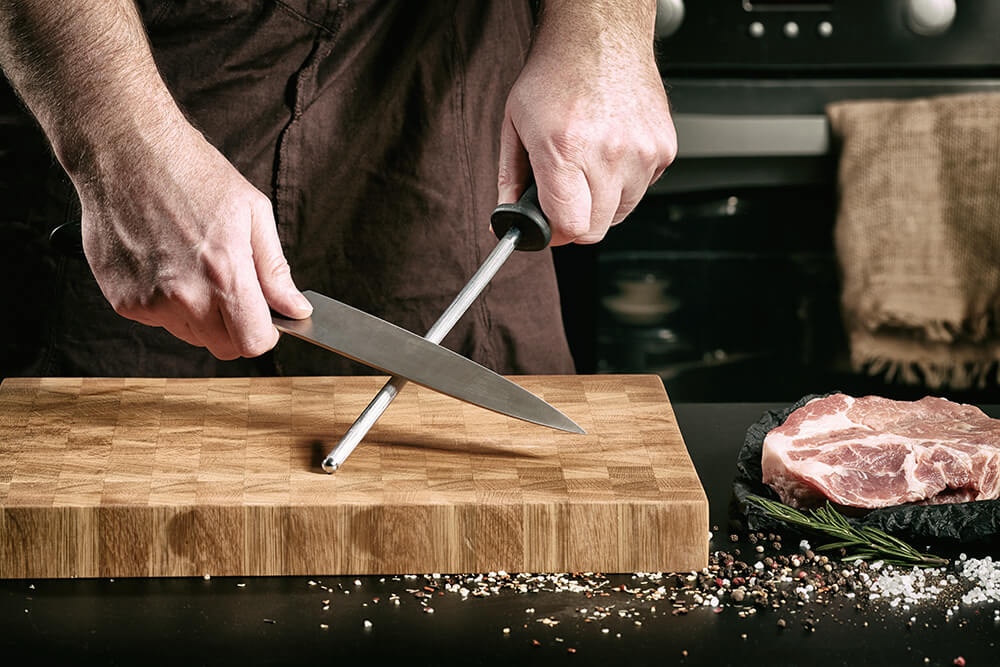
One of the most common challenges I had with our onsite management teams was the sheer uncertainty of where to begin when a venue was bleeding profitability due to stock blowouts and poor cost of goods control.
Over time, we found the best way to reduce that sense of overwhelm (and stress) was to take them through an exercise that simplified it right back and having them imagine they were running a restaurant with just one item on the menu.
One dish. One focus. One shot to get it right.
The example I used was an eye fillet steak, but you can use anything that suits your venue.
In this case, just one beautiful steak, cooked simply, consistently, and with great margins (all going to plan).
Because when you strip it back to one menu item, you can really understand what’s going on, where you’re likely losing money, and most importantly, you feel like you can actually get your head (and hands) around fixing any margin issues you might be having.
Running a restaurant with one dish is the same as running one with a thousand, it just removes a lot of the distractions caused by the other 999 items on your menu.
Let’s take a look at the actual exercise I would go through with our team to make sure they really understood it from start to finish.
Buying Well from the Start
If your whole business relied on one ingredient, you’d start by buying it right.
You would run a proper tender: three local suppliers quoting for the same thing — Whole eye fillet.
Prices would come back between $36 and $42 per kilo.
Same grade and cut, but a $6 per kg gap.
That’s $1.50 per steak difference before a single one’s cooked.
At 250 steaks a week, that’s $375 a week, nearly $20,000 a year.
That single tender sets the tone, not about being cheap, but about being smart and giving yourself a chance to make great margins.
Tracking Prices – Making Sure You Keep Buying Well
Buying well once isn’t enough.
Prices move quietly. Reps change. A “small increase” slips through.
So your admin team checks Loaded and can automatically see every time you ordered the steak, what you were meant to pay and what you actually paid. And sure enough, six weeks in, that same supplier who quoted $38kg has slid to $39.50kg.
That’s a 4% price creep, another $375 a month evaporating without anyone noticing.
Not malicious, just normal. Your supplier deals with hundreds of customers and multiple different prices across their customer base. It’s hard for them to keep it right.
But if you’re not watching, those quiet price drifts are the ones that ruin margins.
One credit note from your admin team gets issued to recover that margin, and the price goes back to $38. The supplier is now naturally more aware of double-checking your account.
The difference between knowing and not knowing?
$4,500 a year, on one item.
Building a Recipe
I’d have the team target a 25% food cost.
So on a $49 steak, you’d have $12.25 to spend — including garnish and butter.
A 250g portion at $38/kg comes in at $9.50, plus around $2.75 in extras.
Bang on $12.25 total cost.
But a generous (or casual) mood in the kitchen changes everything.
A 270 g portion doesn’t look much different to the customer — but it costs $0.80 more per plate. Across 1,000 plates a month, that’s $800 gone, or nearly $10,000 a year.
This is where great kitchens separate from good ones: the ability to prep and run service with process and consistency, not “whatever feels right today.”
The 25% food cost becomes a process and a discipline not a hope.
Stocktaking and Measuring
If you only sold one item, you’d count it every single day. (Well, you should anyway, because you have to count it to know what to order accurately.)
Finish service, count how many portions you have on hand.
If you sold 40 steaks, you should’ve used 10 kg. But some nights, the fridge shows 11.5 kg has been used.
That’s 1.5 kg missing in a single day, the equivalent of six extra steaks. Six steaks at $9.50 cost, that’s $57 in lost profit overnight.
It’s not about blame, it’s about knowing.
Now you can see the problem and figure out what might be going on.
“Tuesday and Wednesday always seem to be our problem. Those are the days Tom is on prep. I’ve noticed the trim bin overflowing a couple of times when he’s working.”
Maybe Tom’s trimming too deep, not getting portions right, probably because he’s just never been trained correctly or held accountable for getting it right. But by counting daily, you find out now, not weeks or months later when the numbers just look ugly.
Within a fortnight, you’d tighten actual usage from 11.5 kg used down to 10.2 kg. That 13% improvement is worth $400–$500 a week in margin, about $20,000 a year.
And the best part? The team starts caring.
When you count every day, people prep and run service like margin matters, because funnily enough, it does if you want to run a great restaurant.
Selling It Right
Once you know your real costs, not your recipe-card fantasy, but your true daily performance, you can sell with confidence.
I’d have the team start at $49, sitting right on 25% food cost.
Then ask what we’d need to achieve in our customers eyes, to earn the right to lift that price. At $54, food cost drops to 22%, and the steak should still fly out the door if you are truly making customers happy at $49.
That $5 change across 12,000 plates a year adds $18,000 in gross profit, all from going deep on understanding how happy your customers currently are and whether a price change will affect overall demand.
There’s one final killer of margin that’s almost never measured in a restaurant - discounts.
When you first built your recipe, you assumed every steak sold for full price.
But in reality:
- 50% staff discount applies to 20 meals a week, and
- 10% loyalty discount applies to 15% of all sales.
Run that math across 250 sales a week, and your average sale price isn’t $49 anymore, it’s closer to $46.75.
That means your 25% food cost quietly climbs to 26.5%, and your profit per steak drops from $37 to $34.75.
That’s $2.25 lost per plate, or $1,125 a week, adding up to almost $60,000 a year.
Those discounts might be worth it, they build loyalty, reward staff, and create community, but they still need to be measured.
Because when you know the true average sale price, you can decide whether that cost is a solid investment in marketing or morale, or whether it’s just straight margin erosion.
The Lesson I Learnt
Training the team to think like they’re running a one-item restaurant forces focus and reduces that overwhelming feeling of needing to get everything right with every stock item in the business.
They can quickly see how every mistake, and even better, every improvement really adds up to increasing profitability.
How You Can Use This
Once you can make one dish consistently profitable, by buying smart, building tight recipes, measuring daily, pricing confidently, and understanding the impact of every discount, you can scale this out to your next five items, then your next five.
All the while making incremental improvements without causing your team to completely freak out about what you’re asking them to accomplish.
And that, folks, is how you turn a single steak meal into a really beautiful hospitality business.

More Profit
Making money doesn’t happen by accident! Learn how to tune your business and improve your bottom-line.

More Success Stories
Get inspired by stories from real Loaded customers who run thriving hospitality businesses.

More Labour
Get tips for optimising your staff’s time, and for managing your team effectively.

More Culture
Making money doesn’t happen by accident! Learn how to tune your business and improve your bottom-line.

More Design
Making money doesn’t happen by accident! Learn how to tune your business and improve your bottom-line.

More Design
Making money doesn’t happen by accident! Learn how to tune your business and improve your bottom-line.
The Best (and Free) Profit and Loss Template for Hospo Groups
This free guide to Financial Management is based on proven formulas and insight that can help drive results in your business.

See how Loaded can work for your business
If you’ve never seen Loaded in action, jump over and book a demo with us. 30 minutes is all we’ll need to show you the magic!


More Design
Making money doesn’t happen by accident! Learn how to tune your business and improve your bottom-line.
Learn from the best
Find articles, videos, E-books and more all delivered by our qualified, world-class community of expert hospitality operators: take a look
Season 2: Spring Bootcamp for a Money-Making Summer
We've poured our 100+ combined years of hospitality experience into a series of live and recorded webinars that will be your bootcamp for a money-making summer.








.jpg)














